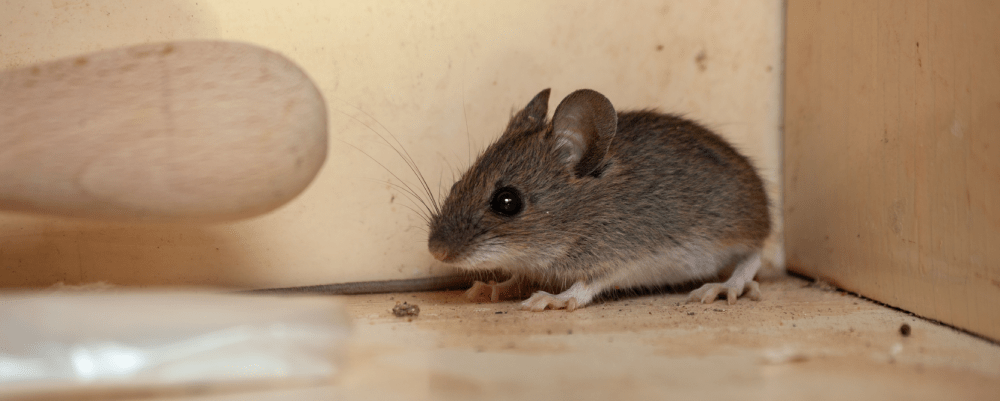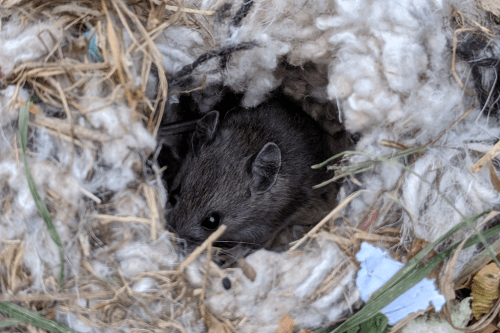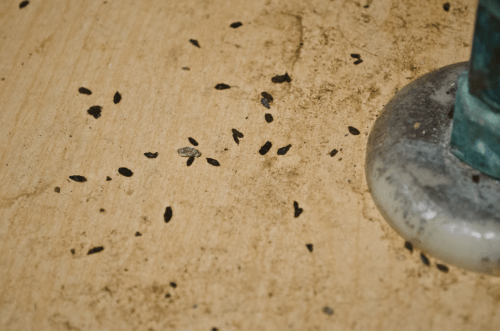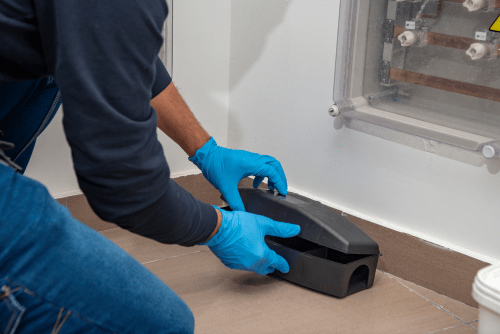
A house mouse is troublesome to homeowners; not only do mice eat food meant for people and pets, but they also contaminate kitchen surfaces and chew through wires or wood. Learn the signs of a mouse in the house and the best ways to get rid of mice if you observe these signs.
Signs that mice are in your home
You may not actually see any mice in your house, but notice some of the tell-tale signs that mice are living in or around your property.
Needless to say, the most obvious sign of a mouse infestation is actually seeing one scurrying across the floor or along a countertop.
Some other ways to tell if you have mice include the following.
Distinctive tracks and runways
Mice run along the same trails, preferring to scurry closely to walls. If you suspect you have mice, study areas along the floor and walls with a flashlight to look for smudges, footprints, or droppings.
Piled-up nesting materials
Mice often create their nests from shredded paper, pieces of fabric, or old plant material and pile them together to make nests. You might find a mound of unexpected items like this in a garage, basement, or other area of the home. If droppings are in or near this pile, it’s a sign of a mouse infestation.
Noises at night
Mice are nocturnal rodents that can be noisy at night when humans are usually trying to sleep. If you hear scratching noises, sounds of an animal running beneath the floorboards, or faint squeaking, you probably have mice. If you have a cat or dog, these sounds will be of great interest to them, so try to take notice if your pets are acting differently.
Rodent droppings
Rodent droppings can be signs on their own. You might find mice droppings, either fresh or dried out, near packages of food, in kitchen drawers, beneath a sink, or around door frames as well as the areas mentioned above.
Bite marks
Mice will gnaw on wallboards when making a nest or on packages while trying to get into a food source. Look for little bite marks on these items if you suspect mice.
Bad smells
Mice leave behind a distinctively foul urine odor that will actively attract a pet. Your cat or dog will gnaw and claw at the area to try and get to the rodent.
Best ways to get rid of mice
Mice are unwelcome houseguests because they not only contaminate food and kitchen surfaces, but they also chew on things, damaging wires, wood, and plastic containers.
Mice can also spread disease through their droppings, urine, hair, or saliva. These diseases can be transmitted via direct contact with surfaces in your home. Indirectly, mice can spread illness through the ticks, fleas, and mites that feed on them, too.
A few of the best ways to get rid of mice are do-it-yourself solutions you can attempt before calling in a pest control company. Whether you already have a mouse infestation or if you want to prevent one from occurring, try the following traps and methods to control mice.
A cat
This may seem cliche, but a cat is actually a great deterrent to mice in the home. If an allergy or some other reason prevents you from getting a cat, use cat litter and spread it close to where you suspect mice may be living. The litter may deter them from continuing to return to their nests.
Steel wool
Mice can enter homes and go back and forth to their nests through very small cracks and holes.
Use steel wool to plug up any spaces that these critters may be able to squeeze through, including holes inside and outside the home that can be as tiny as the diameter of nickel. Look for small holes or gaps behind appliances, inside cabinets, around pipes, and in areas where the floor and wall meet. Check around windows and doors, on the roof eaves and gables, attic vents, and around your home’s foundation outdoors, as well.
Mice traps
You can purchase different kinds of traps to catch mice in your home. Learn more about the different types of traps to find out which are most effective or humane, depending on your needs.
Snap traps
Snap traps work by using a quick-trigger mechanism that closes shut over a mouse’s head. The mice are attracted to the snap trap because it’s set with bait, like peanut butter, and placed in the areas mice will run over in their travels. In this way, the mouse is trapped instantly without having to needlessly suffer. You will need to dispose of the dead mouse.
Live mouse traps
Trapping mice in a way that keeps them alive until you can release them back into the wild feels more humane to some homeowners. Take note that the live trap often frightens them, causing mice to urinate, which increases your risk of disease exposure.
Electronic mouse trap
The electronic trap delivers a high-voltage shock to mice who wander into them, fatally harming them in seconds. Depending on the design used, these types of traps can either catch one mouse or many at a time.
Glue traps
Mice can get stuck in glue traps when they walk across them and can be discarded, trap and all.
Poisons
Using toxic baits to lure and poison mice can also be toxic to humans and pets. Poison bait should be used cautiously and placed in spots that are not close to where children or pets go.
Pest control professionals
Not everyone wants to deal with mice infestations on their own. When a rodent issue is clearly a problem in your home, it’s good to know that pest control professionals are highly experienced in the best ways to address a mouse problem.
Pest service providers will be able to identify mice activity inside and outside your home, noting their nesting sites and the areas they frequent. Bait stations and mechanical traps can be safely set up, with follow-up services to monitor the mice situation in your home.
Categories
RELATED POSTS






